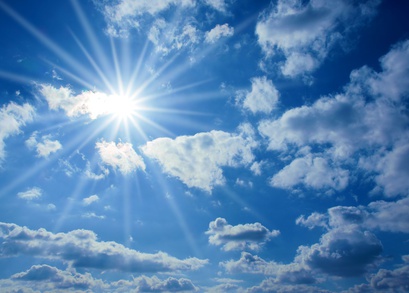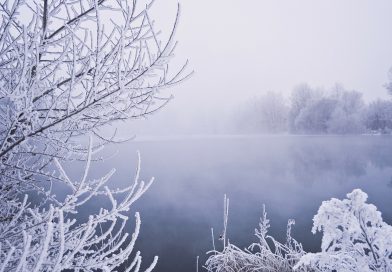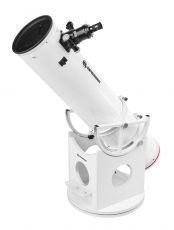Influence of sky quality
Seeing:
A very important point is the atmospheric turbulence (seeing).
This has a direct effect on the resolution and the bad / good Seeing and details you can see.
In 90% of nights (in Germany) we have a Seeing that allows only about 1 ° resolution, so that a 5"opening sufficient to achieve the maximum of visible details. This means that in the moments of calm air with a larger optics more details are visible. But these moments occur rarely also be larger optics can detect faint objects better, but only with a resolution of 1 ° so that one with the magnification to a maximum of 200 - 250 should go compartment.
Transparenz:
The transparency of the sky is at its clearness. This can be due to fog (also high fog), mist or air pollution (dust) are severely limited.
You can clearly see the transparency in light objects, as Jupiter, Mars or the Moon. In terms of a poor visibility a "court" can be seen around the object and acts like a misty glow. Brightness and resolution then decrease very much. Even the best telescope can not be reproduced sharply when the Transperenz of heaven is bad.
Light pollution:
The location is one of the most important criterias! A dark sky can not be substituted, only by darker sky. In Germany, there are very few places only where light pollution is low. Even more distant monitoring stations of major cities are still outshined by this. Larger telescopes showing a high brightness (the sky background is not black), by suitable filters, as "City light filter" and UHC, can be reduce the impacts a bit. Refractor showing darker background in common, even in the citys, based on different design that reduces the light impact.
Temperatures/Saison:
It is often forgotten that temperature and saison play a role in observing seasons.
Summer:
In the summer are high temperatures on the ground, so the temperature difference between the ground and top layers of the atmosphere (stratosphere) is very high and this difference and the upcoming thermal influence the view (seeing).
Do not place the telescope in the sun during the day. It can be heat up significantly and is neither conducive to the mirror, as well as for usage.
Winter:
During winter, the temperature difference between the air layers is lower and the air thus quiet and more suitable for planet observations.
It is important to let cool down the telescope before use, especially if it was in the warm room before! Depending on the temperature difference and the size of the telescope it can take half to one hour.
Tips for beginners:
Especially if you do not know whether the hobby appeals to a, you should in addition to the money that you want to spend, just pull the beginner also necessarily following points into consideration:
Dobson are ideal for beginners as:

- they hang in a sturdy wooden frame (rocker), usually on wheels, and thus form a steady substructure
- set up quickly, simply because the telescope is mounted in the rocker
- they are intuitive to use, since the Telekop simply "pushed" into the desired direction (rocked) is
- they are particularly suitable for children and Judendliche, the reasons given above, plus the low height
- are cheaper than similar telescopes on Statitv with Mount (apart, that has a "clever" mount with sturdy tripod his price)
- Newton provides much opening for little money
This telescope design has not only been proven for 300 years, Isaac Newton was inventor and naming this telecopper type, but it offers through the simple, yet highly efficient design much opening, for high light collection performance. The way of working is wonderful to see.
Small disadvantage: It must be well adjusted and adjusted, so that one has sharp pictures. Unfortunately they are mounted by the manufacturer, but not always adjusted sufficiently. So always pay attention to the optimal adjustment when buying. We are happy to advise you on the right adjustment. - Less is more
Start with fewer eyepieces at the beginning, but with high quality. The standard documents that are included in the beginners' telescopes are ok, but after a while you should get one or two high-quality eyepieces. - Zoom eyepieces

Especially at the beginning you do not know which one of the eyepieces is the right one. Often you want to quickly see many details and then go with the detail eyepiece in the wrong, because simply the exercise is missing. There zoom eyepieces help.
Insert, aim and magnify by turning as desired.
Summary:
A beginner who has little experience at the beginning and does not know how long he would like to pursue this hobby is well on the way with a Dobson, a good zoom eyepiece and will enjoy it for a long time!Provided the telescope is well pre-adjusted and the sky quality is correct and the cooling (adaptation to the ambient temperature) is not forgotten.

